Changes: peace by piece and drop by drop
30 May 2014
Nanning Diaries takes you inside a bear farm that will become a sanctuary. The entire transition will take two years and we’ll keep you up to date every step of the way.
We are indebted to the brilliant Animals Asia bear and vet teams for continuing to share their thoughts and challenges.
Ma Jing – Team Leader - 15.05.14
 The living condition of the bears is poor and naturally the capability of the ex-farm staff yet isn’t up to speed. But I was relieved that both were better than my worst fears and it was heartening to see we were actively able to deal with some of the issues. So far we have changed their food and living environment considerably. In the future we need to completely overhaul staff routines and bear care here. Basically we are asking for a complete shift in the ex-farm team's understanding of what it means to care for bears.
The living condition of the bears is poor and naturally the capability of the ex-farm staff yet isn’t up to speed. But I was relieved that both were better than my worst fears and it was heartening to see we were actively able to deal with some of the issues. So far we have changed their food and living environment considerably. In the future we need to completely overhaul staff routines and bear care here. Basically we are asking for a complete shift in the ex-farm team's understanding of what it means to care for bears.
We need to show them just how much better things are going to be from now on. There is a long road between where we are now and having happy staff and happy bears.
Ren Xiao Yan – Bear Worker -15.05.14
 I went with my colleagues to Nanning Bear Farm to help with feeding and instructing the bear workers there. Soon after arriving we began familiarising ourselves with the facility and the bears.
I went with my colleagues to Nanning Bear Farm to help with feeding and instructing the bear workers there. Soon after arriving we began familiarising ourselves with the facility and the bears.
The cubs and the environment they live in affected me most. They were kept in such limited space and looked so eager to get out. In the two days we were there we worked with the ex-farm staff to teach them how to feed the bears. They used to enter the shed with all the food piled on a trolley and spend an age spooning it out into food bowls. As soon as they started all the bears would become impatient and upset waiting for their share to be given. Now we measure out all the portions into the food bowls before we enter the shed so that we can quickly insert them into the feeding cages which saves a lot of delivery time and bears being upset.
We found other problems while we were there. For one thing, there're no water bowls. They only have bowls for food to which water is also added. Those bowls aren’t fixed so the bears can easily push them away. If that happens and they spill their water ration, then the bear goes thirsty
There's also no handles on the cages that are used to move bears. Bear workers have to put their hands directly on the cage, which creates a risk of being scratched by the bear. That’s an area where the bear staff need our help and we’ll be aiming to change their environment also.
The condition of the shed isn’t hygienic either. There are stains of faeces and urine on the floor which have most likely built up over a long time. Sanitising the bears’ temporary living area is a big issue for us.
I pray and wish for a better environment for these bears and all captive animals.
Heidi Quine – Senior Bear Manager - 15.05.14
 The successful retraining of the Nanning team relies on much more than formal training. Some of the most important and powerful lessons can be delivered through demonstrating compassion for the individual – recognising that each bear has his or her own wants and needs. As caretakers of the bears it is our duty to give the bears everything they need to have fulfilling, meaningful lives.
The successful retraining of the Nanning team relies on much more than formal training. Some of the most important and powerful lessons can be delivered through demonstrating compassion for the individual – recognising that each bear has his or her own wants and needs. As caretakers of the bears it is our duty to give the bears everything they need to have fulfilling, meaningful lives.
Bear Team Officer and Translator Mary, CBRC Team Leader Lu Wen Juan and I spent another three days working alongside the Nanning bear care team this week. Upon arrival we were immediately confronted with having no water, and in the hot, humid climate of Nanning that meant 130 very hot, and very thirsty panting bears.
A broken pump some distance away from the sanctuary meant water was not being pumped to the three sheds housing the bears. Left with little other option, I collected our water and shared it with the bears in Shed 3. It didn't go very far, most bears only had a mouthful or two, but it hopefully eased their thirst.
Thankfully, by the afternoon repair work meant water had started to arrive at the sanctuary. The topographical layout of the site meant Shed 3, the lowest shed, received water first but it would be hours before water reached the other bears.
Making use of some of the equipment usually used for delivering bear food we were able to collect and deliver water to the bears living in sheds one and two. We barely had a chance to scoop water in to their bowls before everyone started quickly drinking – the sheds fell silent except for the sound of bear tongues lapping water.
Once water was properly restored we filled each bears' bowl until they could drink no more, and because some of the Nanning bears seem to be water-babies and love ducking and rolling under the stream of a hose – we spent time with each of these individuals, helping them to wash and cool down.
BACK
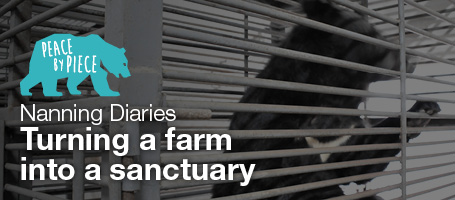
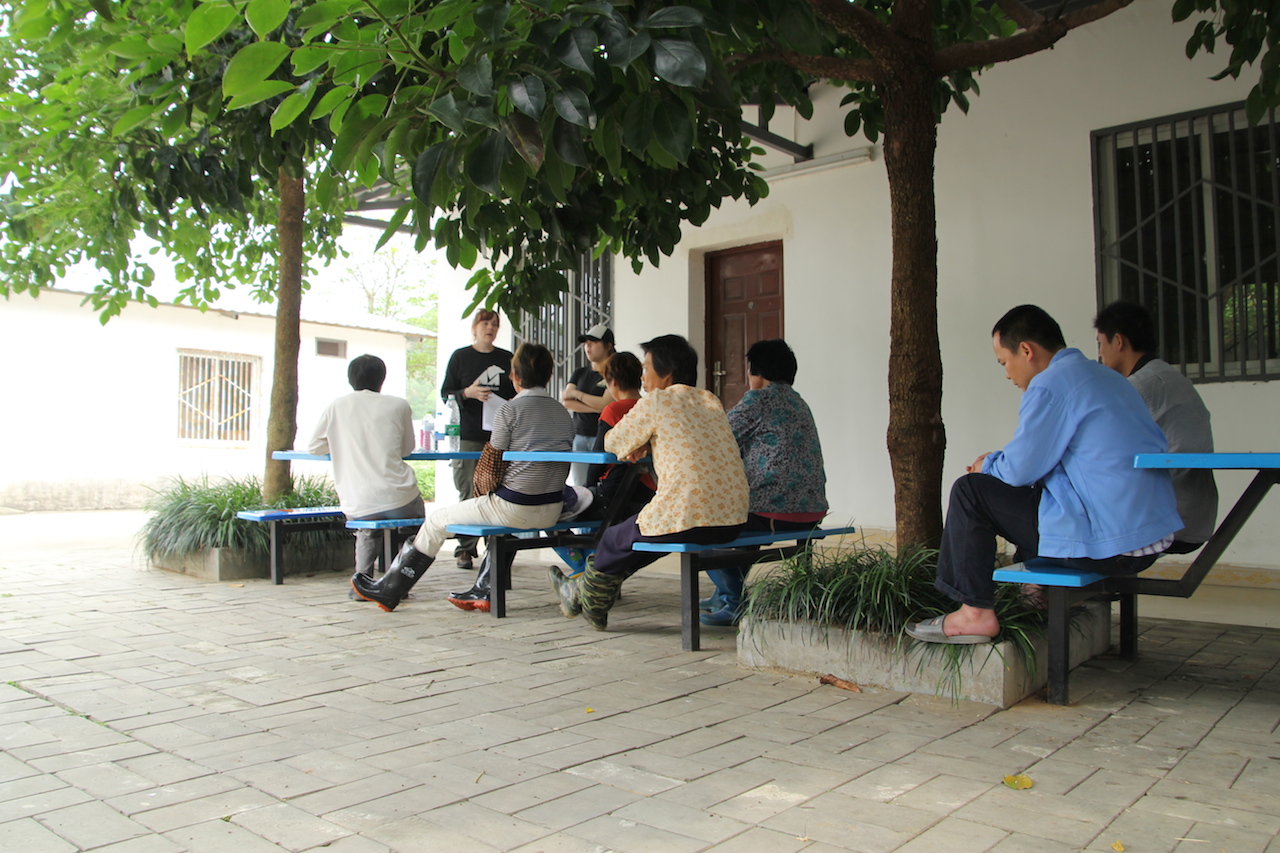
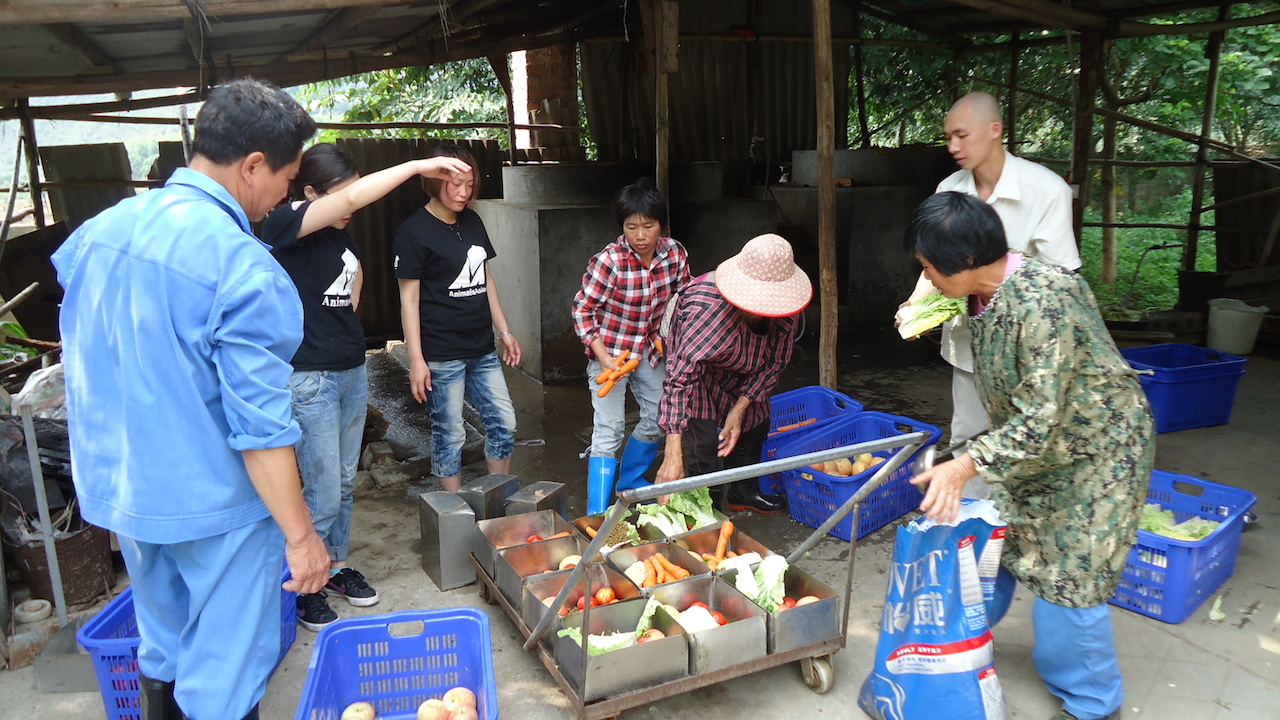






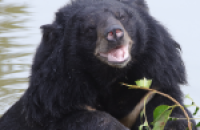 Healing the hidden wounds
Healing the hidden wounds
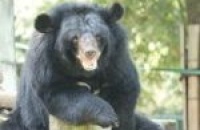 Early summer awakening at the China Bear Rescue Centre!
Early summer awakening at the China Bear Rescue Centre!
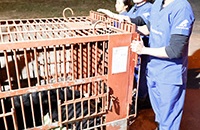 New Year, new home for Christmas the Bear!
New Year, new home for Christmas the Bear!